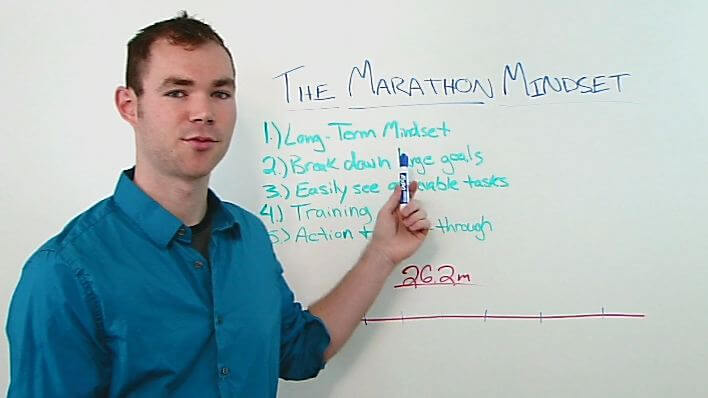If It’s in Your Head, It’s Not Getting Done

Back in my early 20s, I totally sucked at getting things done.
It wasn’t until grad school when I was juggling a growing small business, a part-time MBA schedule, and trying to figure out what I wanted to do with my life, that I really started to understand the value of note taking, lists, and how I managed my time.
I used to never write anything down. My reasoning was that it would make my mind weaker because I would use it as a crutch.
I wasn’t doing myself any favors. Silly me.
What I was really doing was crushing my ability to get a lot of meaningful things done in my life.
I would say things like:
- I should really work on that book
- If only I just wrote more
- Tomorrow, I’m going to start building that website
- Man, I just need to (insert important task here)
What I was doing was using something I like to call “passive goal language” and the result was a lot of unfocused projects in my early 20s.
Passive Goal Language
When I said those things, I honestly meant them (most people do), and I even did some of them now and then, but this was a very passive way to approach the things I wanted to get done.
Think about what you’re doing for a minute when you say something like “I need to do xyz.”
For a few minutes, you get excited about doing it. You even think about how you’re doing to do it, and start making plans in your head.
But then life happens and you only get around to these things if you end up having the “free time” to get them done.
Am I right?
This is very passive behavior. The danger here is that this kind of language actually makes you feel like you’re improving or accomplishing something when you’re really not.
This is very damaging to your personal development because it can give you a sense of satisfaction where there really shouldn’t be one.
Active Goal Setting
Fast forward to now, and I use a simple system of long and short term lists to drive my productivity each and every day.
Whenever I catch myself saying things like, “I should really, I need to, I’m going to,” I take a moment to consider whether those things are in line with my long-term goals.
If they are, they go on either a long-term project list for me to accomplish once I’m finished with what I’m currently working on, or a short-term task list if it’s in line with what I’m working on, and will make an immediate high impact.
From there, my productivity is driven every day by those lists. Otherwise, those ideas get tossed out and ignored.
Get Your Goals on Paper
The easiest way to remember this technique and make this transition for yourself is by remembering this saying…
“If it’s in your head, it’s not getting done.”
Observe yourself to see if you’re making the same mistake I was making.
If you are, get those goals down on paper if you really want to accomplish them.
This not only puts them in an easily accessible spot and makes sure you don’t forget them, but it also psychologically commits you to getting them done.
It’s a lot more difficult not to accomplish something that is staring you in the face all day than something you can easily just wipe from your memory.
I find a small whiteboard or a simple sticky note to be very helpful with this. Smart Phone apps such as Any.Do, EverNote, and Google Docs can also give you a great way to record your ideas and goals while you’re on the go.
Conclusion
The main thing I want you to take away from this post is to stop living in your head.
If you want to really start to get things done, you have to create tangible actions for yourself. Get them out of your head and write them down, because if it’s in your head, it’s not getting done.



